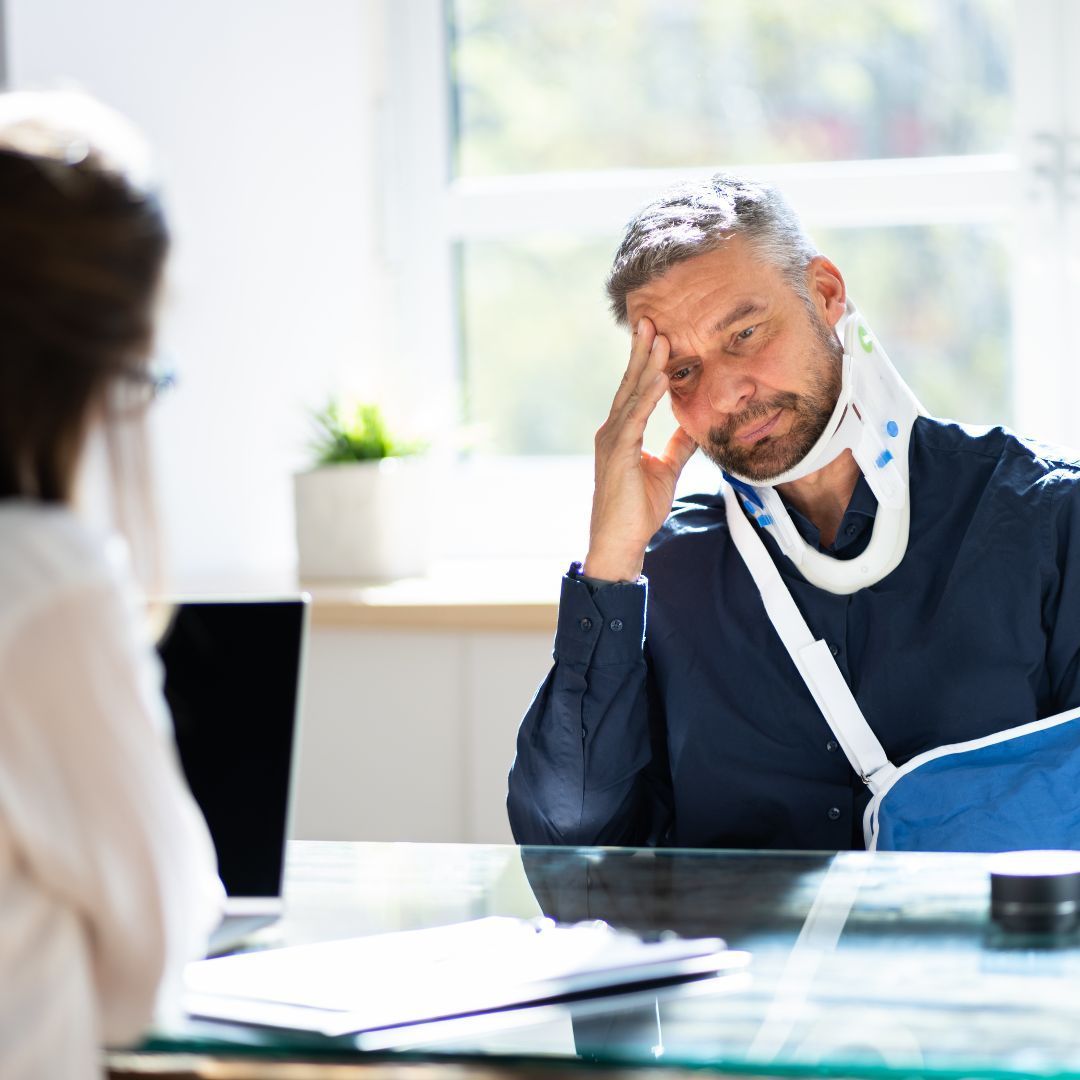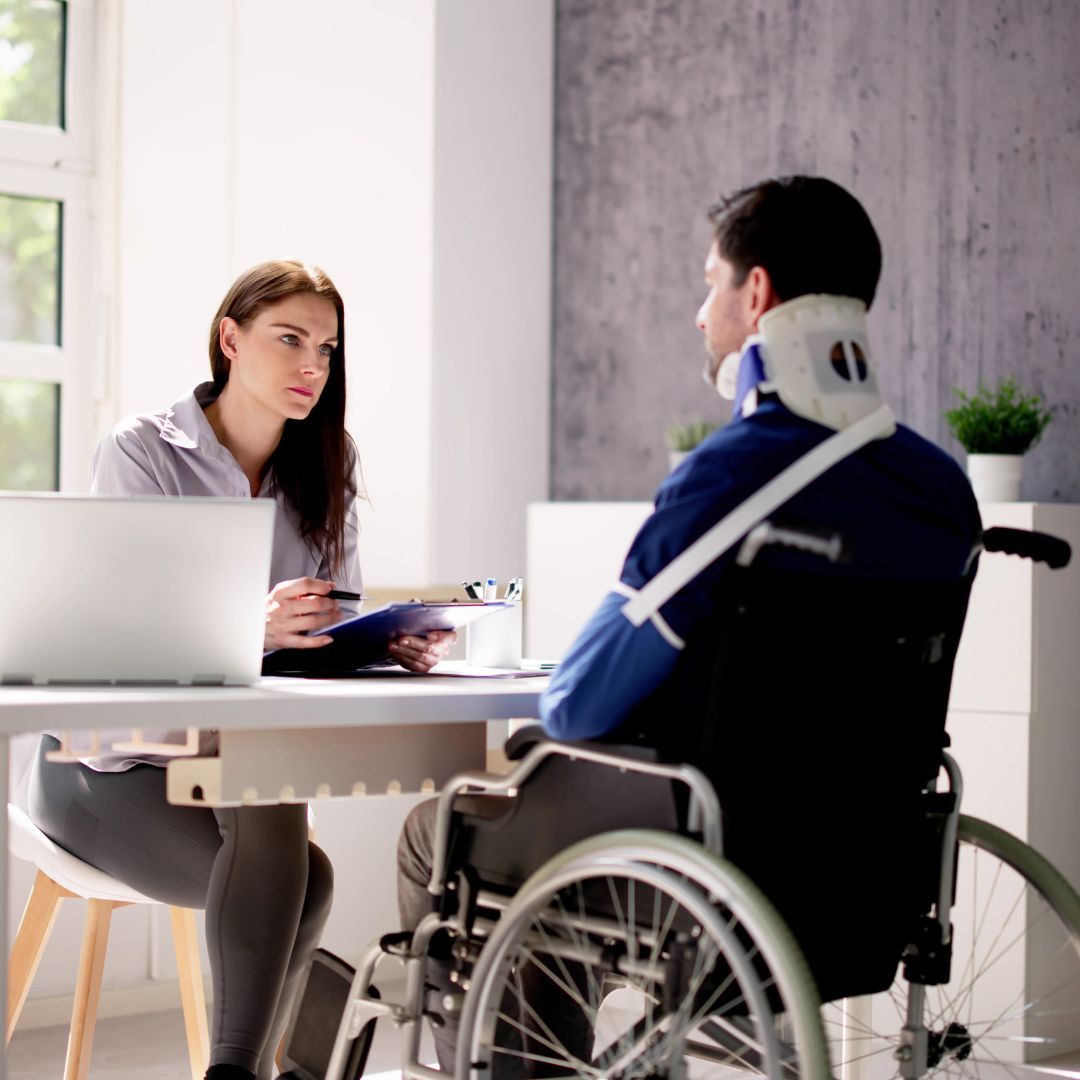Workers Compensation Insurance California For Auto and Transportation
Index
Understanding Workers' Comp Insurance
California's Workers' Comp Insurance Laws
How to Obtain Workers' Comp Insurance in California
Costs Associated with Workers' Comp Insurance
Filing a Workers' Comp Insurance Claim in California
Contact Us
Phone
886-226-4436
Location
9340 Bolsa Ave, Westminster, CA 92683
Workers Comp By City
Auto and Transportation: Understanding Their Impact, Benefits, and Future Trends
In today’s fast-paced world, the auto and transportation industry plays a vital role in connecting people, businesses, and economies. Whether it's daily commuting, logistics, or large-scale industrial transport, efficient transportation systems drive economic growth and improve quality of life. Understanding the various aspects of auto and transportation can help businesses, policymakers, and consumers make informed decisions and maximize efficiency.
Why Understanding Auto and Transportation is Essential
Auto and transportation systems form the backbone of modern infrastructure, influencing commerce, accessibility, and mobility. The sector includes personal vehicles, public transit, freight logistics, and emerging technologies like electric vehicles (EVs) and autonomous driving. Each mode of transportation has distinct advantages and challenges, making it crucial to understand their impact on economies, urban planning, and the environment.
Key Components of Auto and Transportation
1. Personal and Commercial Vehicles
- Personal vehicles provide convenience and flexibility for daily commuting.
- Commercial transportation, including trucks, buses, and taxis, supports business operations and public transit systems.
2. Public Transportation
- Buses, trains, and subways reduce traffic congestion and pollution.
- Accessible public transit promotes economic inclusivity and reduces dependency on personal vehicles.
3. Freight and Logistics
- Transportation networks facilitate the movement of goods across cities, countries, and continents.
- Efficient logistics systems enhance supply chain efficiency and business profitability.
4. Emerging Technologies
- Electric vehicles (EVs) and autonomous cars are revolutionizing the industry with sustainable solutions.
- Ride-sharing and micro-mobility options like e-scooters and bike-sharing services enhance urban mobility.
The Role of Auto and Transportation in Economic Growth
Transportation is a key driver of economic development, enabling trade, investment, and employment. Efficient transport networks enhance productivity by reducing travel time and operational costs. Logistics and freight transportation, in particular, are essential for supply chain optimization, supporting industries like e-commerce, manufacturing, and agriculture.
Benefits of Auto and Transportation
Personal Convenience and Accessibility
- Personal vehicles provide freedom and flexibility for travel.
- Public transportation systems make commuting affordable and efficient.
Economic Growth and Job Creation
- The transportation industry generates millions of jobs worldwide, from vehicle manufacturing to logistics management.
- Improved infrastructure attracts investment and boosts local economies.
Environmental Considerations
- Advances in EVs and sustainable fuels help reduce carbon emissions.
- Efficient public transportation reduces traffic congestion and urban pollution.
Enhanced Supply Chain Efficiency
- Logistics and freight transportation ensure the timely delivery of goods.
- Advanced tracking and automation improve efficiency in inventory management.
Challenges in Auto and Transportation
Despite its benefits, the transportation sector faces several challenges:
Traffic Congestion and Urban Planning Issues
- Overcrowded roads lead to increased commute times and fuel consumption.
- Poor infrastructure planning can limit accessibility and economic growth.
Environmental Impact
- Traditional gasoline-powered vehicles contribute to greenhouse gas emissions.
- Sustainable transport solutions require significant investment and policy changes.
Technological and Regulatory Barriers
- Autonomous and electric vehicle adoption faces regulatory and safety challenges.
- Infrastructure for EV charging and smart transportation requires long-term planning.
How to Optimize Auto and Transportation for Maximum Efficiency
Businesses, governments, and individuals can adopt strategies to improve transportation efficiency and sustainability:
Investing in Sustainable Transportation
- Governments and businesses can incentivize electric vehicle adoption and invest in renewable energy sources.
- Expanding public transit options can reduce reliance on personal vehicles.
Leveraging Technology
- AI-driven traffic management systems can optimize road usage and reduce congestion.
- Smart logistics solutions improve supply chain efficiency and reduce operational costs.
Promoting Multi-Modal Transport Solutions
- Integrating buses, trains, cycling, and pedestrian pathways creates a seamless urban transit experience.
- Ride-sharing and carpooling initiatives help reduce the number of vehicles on the road.
The Future of Auto and Transportation
The transportation industry is undergoing a rapid transformation with innovations that promise greater efficiency, sustainability, and accessibility. Key trends shaping the future include:
Autonomous Vehicles
- Self-driving technology is expected to reduce accidents and improve traffic flow.
- Autonomous delivery trucks and drones could revolutionize the logistics industry.
Electric and Hydrogen-Powered Vehicles
- The shift toward EVs is gaining momentum with government incentives and improved battery technology.
- Hydrogen fuel cells offer an alternative for long-haul and heavy-duty transportation.
Smart Cities and Connected Infrastructure
- IoT-enabled traffic management systems enhance urban mobility.
- Smart parking solutions reduce congestion and emissions.
Hyperloop and High-Speed Rail
- Emerging high-speed rail networks promise faster and more efficient intercity travel.
- Hyperloop technology could redefine long-distance transportation with ultra-fast transit systems.
Auto and Transportation: Understanding the Key Aspects and Benefits
Transportation is an essential part of modern life, enabling the movement of people and goods efficiently across various distances. The auto and transportation industry plays a crucial role in economic growth, urban development, and everyday convenience. Whether you're a business owner, a commuter, or someone interested in logistics, understanding
the key aspects of this sector can help you make informed decisions.
What is Auto and Transportation?
Auto and transportation refer to the movement of people and goods using different modes such as automobiles, public transit, railways, air travel, and maritime shipping. This industry encompasses everything from personal vehicles to mass transit systems and commercial logistics networks.
Characteristics of the Auto and Transportation Industry
- Diverse Modes of Transport: Includes road vehicles (cars, buses, trucks), rail systems, air travel, and shipping.
- Infrastructure Dependency: Roads, bridges, airports, and rail networks are essential for smooth operations.
- Technology-Driven Innovations: Advancements in electric vehicles, automation, and smart traffic management improve efficiency.
- Environmental Considerations: Governments and industries are focusing on sustainability and reducing carbon footprints.
- Economic Impact: The industry generates millions of jobs and drives economic activities worldwide.
Key Segments of the Auto and Transportation Industry
1. Automobile Industry
The automobile sector focuses on manufacturing, selling, and maintaining vehicles for personal and commercial use. It includes cars, motorcycles, trucks, and electric vehicles (EVs).
Characteristics of the Automobile Industry
- Consumer-Centric: Personal vehicles dominate the market, with consumers preferring comfort and efficiency.
- Innovations in Technology: Electric cars, self-driving vehicles, and connected car technologies are reshaping the industry.
- Mass Production & Global Supply Chain: Cars are manufactured in large quantities and distributed through extensive networks.
- Aftermarket Services: Includes maintenance, repairs, and customization options.
Benefits of the Automobile Industry
- Convenience and Mobility: Personal cars provide freedom of movement and flexibility.
- Economic Growth: The industry contributes significantly to global GDP and employment.
- Job Creation: Millions are employed in manufacturing, sales, maintenance, and transportation services.
- Technological Advancements: Promotes innovation in fuel efficiency, safety, and automation.
2. Public Transportation
Public transportation includes buses, subways, trains, and ferries that move large numbers of people efficiently.
Characteristics of Public Transportation
- Cost-Effective Travel: Cheaper than owning a personal vehicle.
- Environmental Benefits: Reduces carbon emissions and traffic congestion.
- Urban Planning Integration: Essential for city development and reducing overcrowding.
- High Passenger Capacity: Designed for mass transit, improving efficiency.
Benefits of Public Transportation
- Affordability: More economical for daily commuting.
- Reduced Traffic Congestion: Helps in decongesting city roads.
- Environmental Sustainability: Lower emissions compared to personal vehicles.
- Improved Accessibility: Provides mobility for people without private vehicles.
3. Commercial and Freight Transportation
Freight transportation involves the movement of goods using trucks, cargo ships, railways, and air transport.
Characteristics of Freight Transportation
- Bulk Shipments: Goods are transported in large quantities.
- Logistics and Supply Chain Management: Efficient planning is crucial for timely deliveries.
- Various Modes: Includes trucking, shipping, rail, and air cargo services.
- Time-Sensitive Deliveries: Critical for businesses relying on just-in-time inventory systems.
Benefits of Freight Transportation
- Supports Global Trade: Facilitates import and export operations.
- Efficient Logistics Solutions: Ensures timely delivery of goods.
- Cost-Effectiveness: Bulk shipping reduces costs.
- Business Growth: Allows companies to expand operations internationally.
Emerging Trends in the Auto and Transportation Industry
1. Electric Vehicles (EVs) Revolution
- Reduced Carbon Footprint: EVs emit fewer greenhouse gases.
- Government Incentives: Many countries offer subsidies for EV adoption.
- Growing Charging Infrastructure: Expanding networks make EVs more practical.
2. Autonomous Vehicles
- Self-Driving Technology: Companies like Tesla and Waymo are pioneering driverless cars.
- Safety Enhancements: Reduces human error in driving.
- Efficiency in Logistics: Autonomous trucks are being tested for freight transportation.
3. Smart Cities and Transportation
- AI and IoT Integration: Smart traffic management for reduced congestion.
- Public Transit Enhancements: Real-time tracking and digital ticketing improve user experience.
- Sustainable Urban Mobility: Promoting cycling and pedestrian-friendly zones.
4. Ride-Sharing and Mobility Services
- Growth of Platforms: Uber, Lyft, and other ride-sharing apps are transforming urban transport.
- Flexible Commuting: Offers convenient alternatives to car ownership.
- Car Subscription Services: Monthly plans for temporary vehicle access.
Challenges in the Auto and Transportation Industry
1. Environmental Concerns
- Air Pollution: Fuel-powered vehicles contribute to global warming.
- Traffic Congestion: Urban areas struggle with increasing vehicle numbers.
- Sustainability Issues: Need for alternative fuels and green transport solutions.
2. High Operational Costs
- Fuel Price Fluctuations: Affects transportation budgets for businesses and consumers.
- Maintenance Expenses: Regular vehicle servicing adds to costs.
- Infrastructure Investment: Developing transportation networks requires heavy funding.
3. Regulatory Challenges
- Government Policies: Emission regulations, safety standards, and taxation impact operations.
- Trade Restrictions: Tariffs and customs regulations affect freight transport.
- Licensing and Compliance: Businesses must adhere to local and international transport laws.
Auto and Transportation: A Comprehensive Guide to Industry Models, Strategies, and Benefits
The auto and transportation industry is a vital sector that facilitates global trade, economic growth, and everyday mobility. Whether you are an entrepreneur looking to invest in the transportation sector or a business seeking efficient logistics solutions, understanding the industry's structure, key players, and benefits can help you navigate the complexities of this field. This guide explores the fundamentals, key differences, advantages, and strategies to thrive in the auto and transportation sectors.
Understanding Auto and Transportation
The auto and transportation sector encompasses various business models and services that ensure the movement of people and goods. These models include automobile manufacturing, public and private transport services, logistics, and freight management.
- Auto Industry: This includes car manufacturers, dealerships, auto repair shops, and parts suppliers.
- Transportation Industry: This comprises passenger transport (buses, taxis, ride-sharing services), freight transport (trucking, rail, air, and maritime shipping), and logistics providers that manage supply chains efficiently.
Each segment plays a crucial role in ensuring seamless movement across local and international markets.
The Role of Auto and Transportation Businesses
Both the auto and transportation industries are integral to global economies, supporting various sectors such as retail, healthcare, and manufacturing. Their roles include:
- Automobile Industry: Produces and supplies vehicles for personal and commercial use, focusing on innovation, safety, and sustainability.
- Transportation Services: Facilitate mobility, logistics, and supply chain management, ensuring timely deliveries and efficient movement of goods and people.
Key Differences Between Auto and Transportation Industries
Understanding the key differences between these industries can help businesses make informed decisions regarding investments, partnerships, and operational strategies.
FeatureAuto IndustryTransportation IndustryPrimary FocusManufacturing and selling vehiclesMoving goods and people efficientlyCustomer BaseIndividual buyers, businesses, dealershipsBusinesses, logistics firms, passengersBusiness ModelVehicle production, sales, and servicingPassenger transport, freight logistics, supply chain managementCapital InvestmentHigh due to production and R&D costsModerate to high, depending on fleet size and infrastructureMarketing StrategyConsumer-focused (advertising, dealerships)B2B-focused (logistics partnerships, corporate clients)
Benefits of Auto and Transportation Business Models
Both industries offer unique advantages depending on business goals and market positioning.
Benefits of the Auto Industry
- Innovation and Technological Advancements: The sector constantly evolves with electric vehicles (EVs), autonomous driving, and smart connectivity.
- Economic Contribution: The auto industry generates employment and contributes significantly to national GDP.
- Diverse Revenue Streams: Companies can earn through vehicle sales, maintenance, spare parts, and financing services.
- Global Market Reach: The demand for automobiles spans across regions, ensuring long-term business opportunities.
- Brand Loyalty: Established brands benefit from customer trust and recurring purchases.
Benefits of the Transportation Industry
- Essential Service: Transportation is a necessity for businesses and individuals, ensuring continuous demand.
- Scalability: Logistics and transportation companies can expand operations regionally and internationally.
- Recurring Revenue: Businesses offering freight and passenger services benefit from consistent income streams.
- Diverse Business Models: Companies can specialize in public transport, freight logistics, or ride-hailing services.
- Technological Integration: AI and automation improve efficiency, reducing operational costs and enhancing customer experiences.
Strategies for Success in Auto and Transportation Businesses
Regardless of the industry segment, implementing effective strategies is crucial for long-term growth and profitability.
Auto Industry Strategies
- Invest in R&D: Develop fuel-efficient, electric, and autonomous vehicles to stay ahead of market trends.
- Expand Sales Channels: Utilize online platforms, dealerships, and direct sales to reach more customers.
- Enhance After-Sales Services: Provide excellent customer support, maintenance packages, and warranties.
- Leverage Digital Marketing: Use social media, SEO, and influencer collaborations to attract buyers.
- Strengthen Supply Chains: Partner with reliable suppliers to ensure timely vehicle production and delivery.
Transportation Industry Strategies
- Optimize Fleet Management: Use GPS tracking, route planning, and AI-based logistics management to improve efficiency.
- Focus on Sustainability: Invest in eco-friendly transportation solutions like electric trucks and smart mobility options.
- Diversify Services: Offer value-added services such as warehousing, last-mile delivery, or premium transport.
- Build Strong Business Partnerships: Collaborate with manufacturers, e-commerce platforms, and logistics firms for mutual growth.
- Improve Customer Experience: Provide real-time tracking, efficient support systems, and seamless booking options.
Choosing Between Auto and Transportation Businesses
Deciding whether to invest in the auto or transportation industry depends on various factors, including capital investment, target audience, and operational goals.
- Choose the Auto Industry if: You are interested in manufacturing, sales, or innovation in vehicle technology.
- Choose the Transportation Industry if: You want to focus on logistics, mobility solutions, or freight management.
The Future of Auto and Transportation Industries
Both industries are evolving due to technological advancements, changing consumer preferences, and global sustainability goals. Key trends shaping the future include:
- Electric and Autonomous Vehicles: The rise of EVs and self-driving technology is revolutionizing mobility.
- Sustainability Initiatives: Green transportation, including electric buses and eco-friendly logistics, is gaining traction.
- Smart Mobility Solutions: Integration of AI, IoT, and blockchain in transport management enhances efficiency.
- E-commerce Growth: Increased demand for fast shipping and last-mile delivery is driving transportation innovations.
- Shared Mobility Trends: Ride-sharing, bike rentals, and carpooling services are redefining urban mobility.
Auto and Transportation: Understanding the Industry and Its Impact
In today’s fast-paced world, the auto and transportation industry plays a critical role in connecting people and businesses. From personal vehicles to commercial freight, transportation fuels economic growth and daily convenience. Understanding the different sectors within this industry, their benefits, and future trends is crucial for individuals, businesses, and policymakers alike.
Understanding Auto and Transportation
The auto and transportation sector encompasses various modes of mobility, including cars, public transit, air travel, and logistics. This industry not only facilitates movement but also drives technological advancements and environmental policies.
Key Aspects of Auto and Transportation
Personal Transportation Overview
Personal transportation refers to vehicles used for individual and family travel. This includes cars, motorcycles, bicycles, and electric scooters. With the rise of ride-sharing services and electric vehicles (EVs), personal transportation is undergoing significant changes.
Key Characteristics of Personal Transportation:
- Provides convenience and independence.
- Includes traditional fuel-based and electric vehicles.
- Faces challenges like traffic congestion and fuel costs.
- Increasing focus on sustainability and alternative fuels.
Public and Commercial Transportation Overview
Public transportation includes buses, trains, subways, and ferries, providing affordable and efficient mobility options. Commercial transportation, on the other hand, focuses on moving goods and people on a larger scale, including trucking, shipping, and aviation.
Key Characteristics of Public and Commercial Transportation:
- Reduces congestion and environmental impact.
- More cost-effective compared to personal transportation.
- Plays a crucial role in urban planning and infrastructure.
- Requires significant investment in maintenance and safety.
The Role of Auto and Transportation in the Economy
The auto and transportation industry is a major contributor to global economic growth, creating jobs and facilitating
trade and commerce.
Personal Transportation's Contribution to the Economy:
- Drives automobile manufacturing and sales.
- Creates employment in vehicle production, maintenance, and sales.
- Influences fuel and energy sectors.
- Supports tourism and hospitality industries.
Commercial Transportation's Contribution to the Economy:
- Enables supply chain efficiency and global trade.
- Supports e-commerce through rapid deliveries.
- Creates jobs in logistics, trucking, and freight services.
- Enhances infrastructure development and investment opportunities.
Benefits of Auto and Transportation
Advantages of Personal Transportation
Personal transportation offers convenience, efficiency, and mobility, allowing individuals greater control over their travel plans.
Key Benefits:
- Independence: Freedom to travel at any time without reliance on schedules.
- Time Efficiency: Direct routes reduce travel time compared to public transit.
- Comfort: Personal vehicles provide privacy and convenience.
- Advanced Safety Features: New vehicle technologies enhance driver and passenger safety.
Advantages of Public and Commercial Transportation
Public and commercial transportation systems play a vital role in reducing congestion and promoting economic sustainability.
Key Benefits:
- Cost-Effective: Public transport is generally more affordable than owning a vehicle.
- Environmental Benefits: Reduces carbon footprint through shared mobility.
- Traffic Reduction: Helps decrease road congestion in urban areas.
- Job Creation: Supports employment in logistics, maintenance, and operations.
How to Choose Between Personal and Public Transportation
Choosing between personal and public transportation depends on multiple factors, including cost, convenience, and environmental impact.
Factors to Consider:
- Budget: Personal vehicles require fuel, insurance, and maintenance costs, while public transit offers cost savings.
- Accessibility: Public transportation is beneficial in urban areas with extensive networks, while personal vehicles offer flexibility in rural areas.
- Sustainability: Environmentally conscious individuals may opt for public transit, biking, or electric vehicles.
- Travel Needs: Long-distance commuters may prefer personal vehicles, while city dwellers benefit from public transit options.
Auto and Transportation: Compliance and Risk Management
The auto and transportation industry must adhere to regulations related to safety, emissions, and business operations.
Key Compliance Areas:
- Vehicle Safety Standards: Ensures proper design, maintenance, and roadworthiness.
- Emissions Regulations: Encourages adoption of clean energy solutions.
- Insurance Requirements: Mandates liability coverage for vehicle owners and operators.
- Licensing and Certification: Professional drivers and commercial carriers require proper permits and training.
The Future of Auto and Transportation
Technological advancements, environmental concerns, and evolving consumer behaviors are shaping the future of the
auto and transportation industry.
Trends in Personal Transportation:
- Electric and Autonomous Vehicles: Rapid advancements in EVs and self-driving technology.
- Car-Sharing Services: Growth of platforms like Uber, Lyft, and Zipcar.
- Smart Infrastructure: Integration of AI and IoT for efficient traffic management.
- Sustainable Urban Mobility: Focus on cycling lanes and pedestrian-friendly urban design.
Trends in Public and Commercial Transportation:
- High-Speed Rail and Hyperloop: Innovations for faster, more efficient travel.
- Autonomous Freight Transport: Self-driving trucks and drones for deliveries.
- Green Logistics: Adoption of electric trucks and sustainable packaging.
- Digital Transformation: AI-driven route optimization and fleet management.
Landscape Design: Transforming Outdoor Spaces for Beauty and Functionality
In today’s world, landscape design plays a pivotal role in enhancing the aesthetic appeal and functionality of outdoor spaces. Whether it's for residential homes, commercial properties, or public areas, well-designed landscapes can increase property value, improve the environment, and offer spaces for relaxation or productivity. As a homeowner, business owner, or developer, understanding the principles and importance of landscape design can help you create beautiful and sustainable outdoor environments that meet both your personal and practical needs.
Understanding Landscape Design
Landscape design is a multi-faceted discipline that involves the planning, design, and management of outdoor spaces. It blends elements of horticulture, architecture, ecology, and art to create functional, aesthetically pleasing, and sustainable environments. A good landscape design takes into account factors such as the terrain, climate, existing plant life, and the needs of the people using the space.
The landscape design process typically starts with an assessment of the land, followed by creating a design that meets both practical and aesthetic goals. This may include selecting plants, choosing hardscape materials (such as stone, wood, or metal), and integrating water features, lighting, and other functional elements.
The Role of Landscape Design in Property Value
One of the key reasons for investing in professional landscape design is its ability to enhance property value. A well-maintained landscape can increase the curb appeal of a home, making it more attractive to potential buyers. According to industry reports, a well-designed landscape can add up to 15% to the value of a property.
In addition to aesthetic appeal, landscapes can also improve the functionality of outdoor spaces. For example, well-planned outdoor living areas, such as patios, decks, and gardens, provide valuable additional space for socializing and relaxation. These spaces are especially valuable for residential properties, but they can also improve the experience for customers or employees in commercial and public settings.
Key Elements of Landscape Design
Landscape design involves various elements that work together to create a harmonious and functional outdoor space. Understanding these elements is essential for anyone interested in pursuing landscape design, whether you're designing your own yard or working with a professional.
1. Softscapes: Plants and Vegetation
Softscaping refers to the use of plants and vegetation in a landscape design. This includes trees, shrubs, flowers, grass, and other types of greenery. Plants play a crucial role in shaping the aesthetic of a space, providing color, texture, and contrast. They can also enhance privacy, reduce noise, and improve air quality.
When designing softscapes, it's important to consider the climate, soil conditions, and maintenance requirements of different plant species. For example, drought-resistant plants may be ideal for arid climates, while native plants can offer low-maintenance solutions and provide habitats for local wildlife.
2. Hardscapes: Non-Plant Elements
Hardscaping refers to the use of non-plant elements such as patios, walkways, fences, retaining walls, and outdoor structures. These elements provide structure and function to the landscape. For example, walkways and patios create accessible areas for walking and socializing, while retaining walls can be used to manage slopes and prevent erosion.
Hardscape features also allow for greater creativity and personalization in design. Different materials, such as stone, brick, wood, or concrete, can be used to create a variety of textures and styles, from rustic and natural to modern and sleek.
3. Water Features: Adding Tranquility and Style
Water features, such as fountains, ponds, waterfalls, and streams, are popular in landscape design because they add tranquility and a sense of serenity to outdoor spaces. The sound of flowing water can help mask unwanted noise and create a peaceful atmosphere.
Water features also serve as focal points in a landscape, drawing the eye and creating a sense of balance. They can be designed to complement the overall theme of the landscape, whether it's a formal garden or a more relaxed, natural space.
4. Lighting: Extending Outdoor Enjoyment
Outdoor lighting plays an essential role in landscape design, particularly for evening or nighttime use. Proper lighting highlights the beauty of plants, hardscape elements, and water features, while also increasing safety and security in outdoor areas.
Lighting can be used strategically to create ambiance, illuminate walkways, or highlight architectural features. It can also make outdoor spaces usable at night, extending their functionality for entertaining, dining, or relaxation.
5. Sustainability: Designing for the Future
Sustainable landscape design focuses on creating outdoor spaces that have minimal environmental impact and use resources efficiently. This includes selecting native plants that require less water and fertilizer, incorporating rain gardens
or permeable surfaces to manage stormwater, and using eco-friendly materials for hardscaping.
Sustainability also involves designing landscapes that support local wildlife and reduce energy consumption. For example, strategically placed trees and shrubs can provide shade, reducing the need for air conditioning in the summer months.
The Importance of Hiring a Professional Landscape Designer
While DIY landscaping can be a fun and rewarding project, hiring a professional landscape designer can help ensure that your outdoor space is both functional and visually appealing. Professional designers have the knowledge and experience to create designs that align with your vision, taking into account the specific needs of your property and the local environment.
A landscape designer can help with everything from the initial planning stages to the selection of plants and materials. They can also assist with irrigation and drainage solutions, ensuring that your landscape is not only beautiful but also sustainable and easy to maintain.
Additionally, professional designers stay up to date with the latest trends and techniques in the industry, ensuring that your landscape design remains relevant and efficient for years to come.
Benefits of a Thoughtfully Designed Landscape
Investing in professional landscape design offers numerous benefits, including:
- Enhanced Aesthetic Appeal: A well-designed landscape enhances the beauty and visual appeal of your property, creating an inviting atmosphere.
- Increased Property Value: A thoughtfully designed landscape can add significant value to your property, making it more attractive to potential buyers or tenants.
- Improved Functionality: Landscape design creates usable outdoor spaces that cater to your specific needs, whether for relaxation, entertainment, or recreation.
- Environmental Benefits: Sustainable landscape design practices can improve soil health, conserve water, and provide habitats for wildlife.
- Reduced Maintenance: Proper design and plant selection can make your landscape easier to maintain, saving time and effort in the long run.
What insurance do you need to transport people?
To transport people, you typically need specific types of insurance coverage to ensure safety, legal compliance, and financial protection. The most important insurance for transporting people is commercial auto insurance with liability coverage, which is required by law for any vehicle used for business purposes. This covers bodily injury and property damage to others if the driver is at fault in an accident. Additionally, passenger liability insurance is crucial for protecting passengers in the event of an accident, ensuring medical expenses, and covering injuries sustained during transport. If you operate vehicles for hire, such as buses or shuttles, you may also need vehicle-for-hire insurance or livery insurance, which offers coverage specific to those who transport people for a fee. Workers' compensation insurance may also be necessary for employees driving the vehicles. Lastly, if your business operates in certain sectors, you might need additional coverage like commercial general liability insurance for accidents that could occur at pick-up or drop-off points. Having these types of coverage helps ensure that your business is properly protected and complies with legal requirements for transporting people.
What is transportation insurance coverage?
Transportation insurance coverage is a type of insurance that protects businesses and individuals against risks associated with the movement of goods and cargo. It covers the transportation of goods by various modes, such as land, sea, and air. This insurance typically includes protection against damage, loss, theft, or destruction of goods while in transit. It can also cover liabilities that arise from accidents, delays, or mishandling during the shipping process. Transportation insurance is particularly important for businesses involved in logistics, shipping, and freight, as it ensures that their goods are covered from the point of origin to the final destination. Depending on the policy, it may offer coverage for specific perils such as weather-related damage, collisions, or piracy, providing peace of mind for companies and individuals involved in the transportation and distribution of goods.
How much is transportation insurance per month?
The cost of transportation insurance per month can vary widely depending on several factors, including the type of transportation, the value of the goods being transported, the level of coverage required, the size and nature of the business, and the risk factors involved. For example, a small business transporting low-value goods may pay as little as $50 to $200 per month for basic coverage, while larger businesses involved in high-risk transportation, such as shipping high-value cargo or operating in areas prone to accidents, may face premiums that range from several hundred to thousands of dollars per month. Other factors, such as the frequency of shipments, the type of vehicles used, the driving records of the operators, and the specific insurance provider, will also influence the cost. To get an accurate estimate, it's recommended for businesses to obtain quotes from various insurance providers, tailored to their unique needs and risks.
What is good transport insurance?
Good transport insurance is a comprehensive coverage designed to protect businesses, individuals, or carriers involved in the transportation of goods or people. It provides financial protection against a wide range of risks that may arise during transit, such as accidents, theft, damage to goods, natural disasters, or delays. For example, good transport insurance covers damages to the cargo being transported, vehicles involved in the transportation, and liability for any third-party injuries or property damage caused by the transport process. The level of coverage can vary depending on the type of transport—whether land, sea, or air—and the specific needs of the insured. A good transport insurance policy should offer appropriate coverage for both the goods in transit and the transportation vehicle, provide clear terms and conditions, and be customizable based on the unique risks of the transportation business or activity. Additionally, it should ensure timely compensation for damages or losses, providing peace of mind for businesses and individuals relying on smooth and secure transportation.
REQUEST A QUOTE
Speak with a CA Workers Compensation Insurance specialist today!
Learn More About Workers Comp. Insurance











